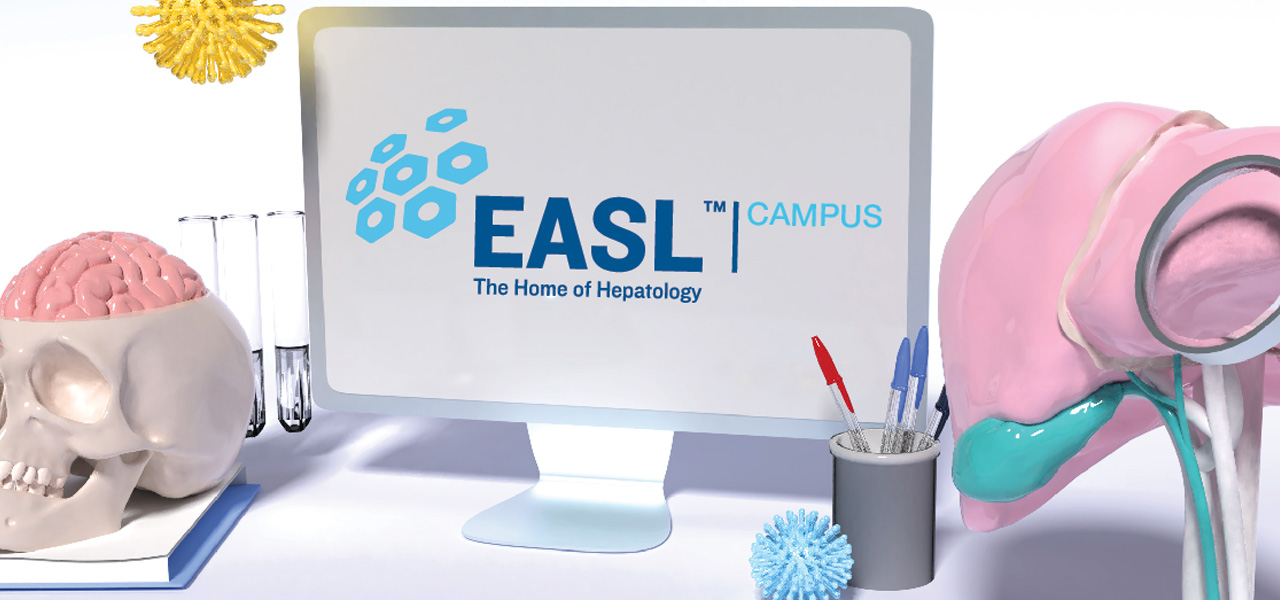Ultrasound modules 3 and 4 now available on EASL Campus

Modules 3 and 4 of the EASL/EFSUMB Ultrasound of the Liver course are now available on EASL Campus.
Module 3 – Focal liver lesions; the liver and biliary system
Course description:
The third module of the EASL/EFSUMB Basics of Ultrasound course takes a detailed look at focal liver lesions. You will thoroughly examine the differences between cystic-appearing lesions, benign solid lesions and malignant lesions on liver ultrasound, including their distinguishing features and clinical significance. In addition, you will learn how the sonoanatomy of the gallbladder and bile ducts is altered in liver disease, and review the diagnostic features of obstructive jaundice, cholangitis and liver abscesses. Primary sclerosing cholangitis and IgG4-related cholangitis will be specifically addressed. You can also follow a step-by-step examination of focal liver lesions by conventional and contrast-enhanced ultrasound in the hands-on video demonstration.
Learning objectives:
At the end of this course, you should be able to:
- List the ultrasonographic features of the most common types of cystic liver lesions and their clinical significance
- Describe the ultrasonographic appearance and blood supply of focal nodular hyperplasias, haemangiomas, hepatocellular adenomas and focal fatty sparing
- List the ultrasonographic features that are suggestive of lesion malignancy
- Describe how the sonoanatomy of the gallbladder and bile ducts varies between normal and disease states
- Explain how ultrasound can help determine the cause and level of intrahepatic bile duct obstruction
Target audience:
- Hepatologists
- Oncologists
- Trainees
- General practitioners with interest in focal liver lesions
Interested? Then access the course now.
*Please note that this course is only available through self-enrolment.
Module 4 – Liver Elastography
Course description:
The fourth module of the EASL/EFSUMB Basics of Ultrasound course introduces the field of liver elastography, beginning with an overview of the underlying physical principles behind this technology and continuing through practical tips to its implementation. You will be guided through the key aspects of international guidelines in liver elastography and examine the limitations of elastography and the confounding factors that you will need to consider when using the technique. Finally, you will be given a grounding in the ultrasound examination of paediatric patients, covering the liver conditions that are most commonly seen in children and the differences inherent in examining this patient population. A hands-on video will demonstrate two real-world implementations of liver elastography.
Learning objectives:
At the end of this course, you should be able to:
- Explain the fundamental physical principles of liver elastography
- Apply best practice, as detailed by the EASL, EFSUMB and WFUMB guidelines, when carrying out liver elastography
- Describe the differences between carrying out ultrasound examination in children and adults
- List the most common liver conditions and distinguishing ultrasonographic features of liver disease in children
- Describe the limitations and confounding factors of shear wave elastography
Target audience:
- Hepatologists
- Oncologists
- Trainees
- General practitioners with interest in liver elastography
Interested? Then access the course now.
*Please note that this course is only available through self-enrolment.

